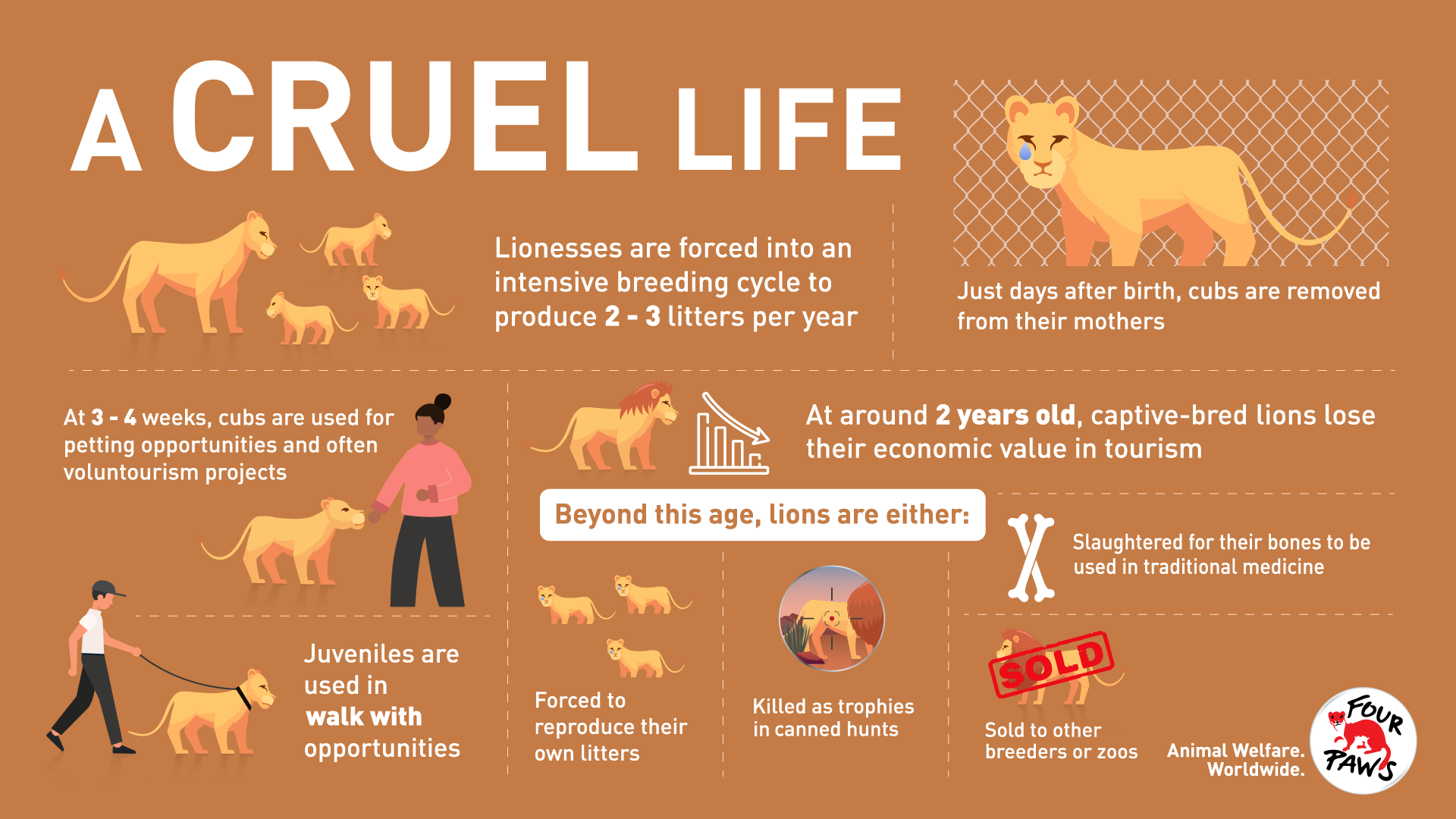
The life cyCle of exploitation
Help us #BreakTheViciousCycle
In South Africa the breeding and commercial trade of big cats, such as lions and tigers, is still happening. That means they are used as pets, for interactions for tourists, or even exported to Asia where their body parts are used to make traditional medicine. Thousands of big cats are held captive under unacceptable conditions while the wild population is in decline. Find more details in our infographics below:
Captive lions are being exploited
Lions especially are a victim of the exploitation of big cats in South Africa. While the cubs are being used for petting and walking opportunities in tourism, older lions are being shot for trophies or slaughtered for their bones.
The dangers of exploiting animals and people
Walking, petting and other tourism interactions have resulted in numerous attacks by the big cats on the people involved. Even the keepers and owners are not safe. Protect wildlife and people with #BreakTheViciousCycle.

You can help stop the exploitation
By avoiding facilities that allow interaction with big cats, you can help stop the exploitation of animals and people. Travel Kind and avoid ruthless tourism activities.

Review of the exploitation of South Africa's captive big cats and its people in our report here!
South Africa exports animal cruelty
Hundreds of live lions as well as hundreds of lion trophies and skeletons are being exported every year. A vast majority comes from captive-bred lions. They are mostly sold to eastern countries or the USA.

Interacting with big cats in captivity feeds the vicious cycle
One lion kill can be worth up to A$76,500 (51,000 EUR). More than 300 breeding farms profit off keeping and breeding big cats in captivity. This will continue if people do not stop visiting facilities that sell interactions with big cats. Avoid tourism activities with close interactions with big cats.




